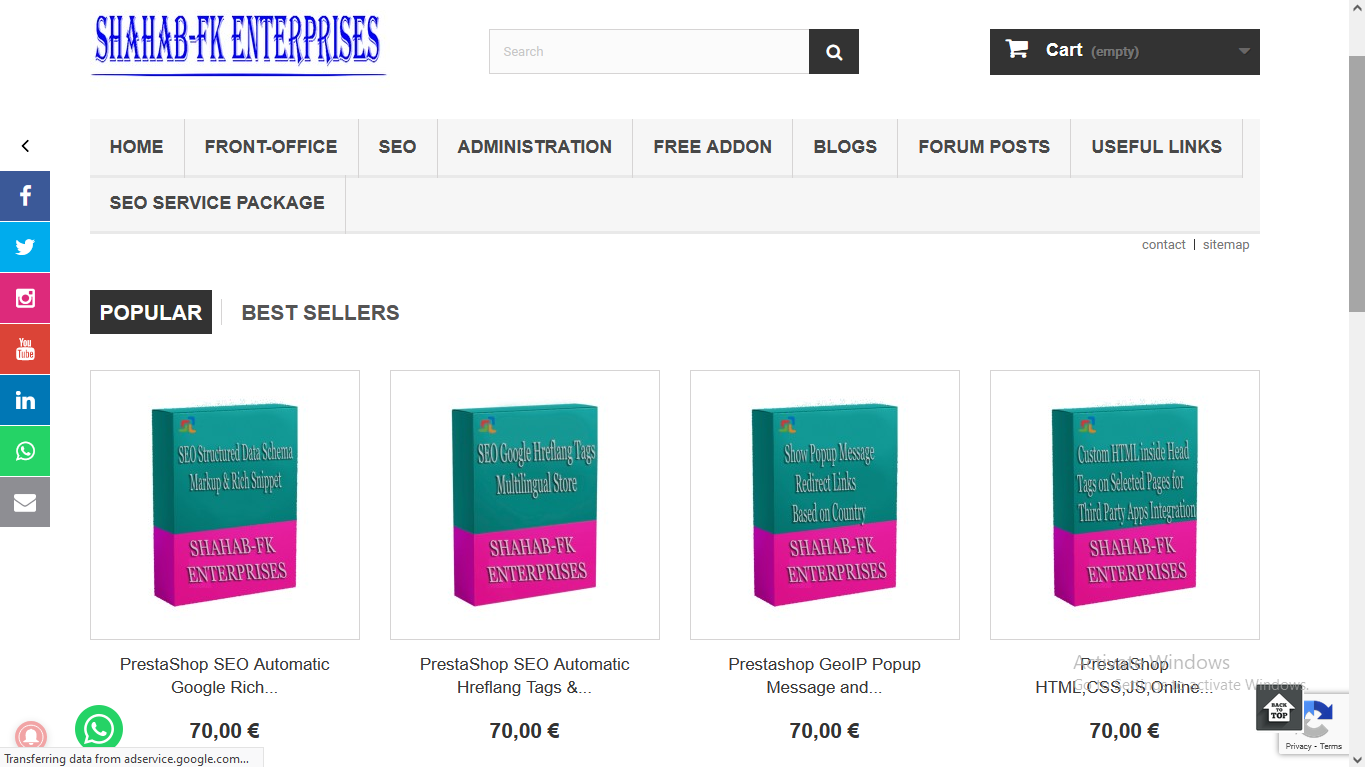Using Google Tag Manager (GTM) in PrestaShop can be a powerful way to manage various tracking codes, tags, and scripts on your e-commerce website without directly editing your website’s code. GTM allows you to implement and manage these elements through a user-friendly interface, making it easier to maintain and update your tracking configurations. This can be especially useful for SEO-related tasks, as well as other marketing and analytics activities.
Here’s a general guide on how to use Google Tag Manager in PrestaShop for SEO purposes:
- Create a Google Tag Manager Account: If you don’t already have one, create a Google Tag Manager account by visiting the Google Tag Manager website (https://tagmanager.google.com/) and following the setup process.
- Create a Container: In Google Tag Manager, create a new container for your PrestaShop website. This container will hold all the tags and tracking codes you want to manage.
- Implement GTM on PrestaShop: To add Google Tag Manager to your PrestaShop website, you’ll need to add the GTM container code to your website’s template. Look for the
<head>section of your template and add the GTM container snippet there. This typically involves adding two code snippets: one in the<head>section and another right after the opening<body>tag. - Create Tags for SEO: Inside your GTM container, you can create tags for various SEO-related tasks, such as Google Analytics tracking, Google Search Console verification, schema markup, etc. For example, you can create a Google Analytics tag to track user interactions and website performance.
- Test and Publish: After creating your tags, use the GTM Preview mode to ensure that they’re working as expected. Test how they behave on your website before publishing the changes.
- Publish Changes: Once you’ve verified that everything is working correctly, publish your changes in GTM. The updated tags and tracking codes will be deployed on your PrestaShop website.
- Ongoing Management: One of the key benefits of using GTM is that you can manage and update your tracking configurations without needing to modify your website’s code directly. You can make changes, add new tags, or update existing ones through the GTM interface.
Remember that the exact steps might vary based on your specific version of PrestaShop and any updates that have been made since my last knowledge update in September 2021. Always refer to the official documentation for PrestaShop and Google Tag Manager for the most up-to-date instructions.
Additionally, while GTM is a powerful tool, make sure to exercise caution when adding and managing tags. Adding too many tags can slow down your website’s performance, and incorrect configurations can lead to inaccurate data.

